| Mosque of Abu Ubaidah Amer ibn al-Jarrah | |
|---|---|
مسجد أبي عبيدة عامر بن الجراح | |
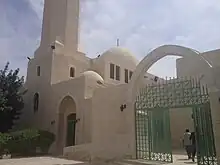 | |
| Religion | |
| Affiliation | Islam |
| District | Deir Alla |
| Province | Balqa Governorate |
| Status | Active |
| Location | |
| Location | Deir Alla, Balqa Governorate, Jordan |
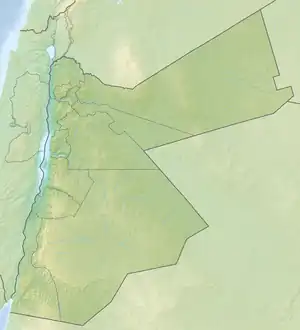 Location in Jordan | |
| Geographic coordinates | 32°13′37″N 35°37′10″E / 32.2270325°N 35.6195265°E |
| Architecture | |
| Style | Modern (formerly Mamluk |
| Date established | 13th century (shrine) |
| Completed | 1954 (present structure) |
| Specifications | |
| Capacity | 3000 worshipers |
| Interior area | 6,500 square metres |
| Shrine(s) | 1 |
The Mosque of Abu Ubaidah Amer ibn al-Jarrah (Arabic: مسجد أبي عبيدة عامر بن الجراح) is a historic mosque and mausoleum located in the town of Deir Alla, Jordan.[1] It contains the purported tomb of Abu Ubayda ibn al-Jarrah, one of the Sahabah and a military commander of the Rashidun Caliphate.[1]
History
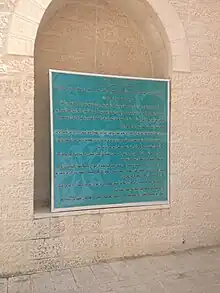
Abu Ubayda ibn al-Jarrah died in the year 639, various sources reported his burial in the territory of what is now present-day Jordan. In the 13th century, a domed mausoleum and an attached mosque were erected over the purported grave of Abu Ubayda ibn al-Jarrah by the Mamluk ruler, Baybars.[1][2] During the rule of the Hashemite Kingdom, in the years 1946 until 1954, the mosque and its adjoining mausoleum were entirely rebuilt into a larger structure, at the request of the Ministry of Jordan.[3][1] The current structure is modern, but there are inscriptions from the Mamluk period still preserved in the mosque.[1]
Features of the mosque
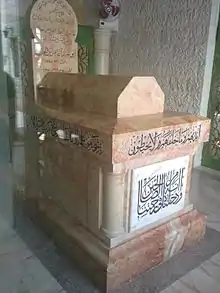
The mosque is well known for containing the tomb of the famed military commander it is named after.[3][1][2]
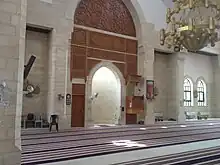
Other than the aforementioned, there is also a library and an Islamic museum.[4][3] Residences are present for the Imam of the mosque and the muezzin.[4] A multi-purpose hall and an area for the VIP guests is also included in the complex.[4] There is a large cemetery outside the mosque complex, which currently suffers from a shortage of burial plots, due to people wishing to be buried next to a revered figure in their religion.[5]
See also
References
- 1 2 3 4 5 6 "النقوش الأثرية في ضريح الصحابي أبي عبيدة عامر بن الجرَّاح و مسجده". search.emarefa.net. Retrieved 2023-12-14.
- 1 2 "Wayback Machine". web.archive.org. 2016-03-08. Retrieved 2023-12-14.
- 1 2 3 "مقام ابو عبيدة". alrainewspaper. 2018-05-28. Retrieved 2023-12-14.
- 1 2 3 "ضريح الصحابي الجليل سيدنا أبي عبيدة عامر بن الجراح رضي الله عنه". www.almaqamat.com. Retrieved 2023-12-14.
- ↑ "مقبرة الصحابي أبي عبيدة يرجع تاريخها الى العام الهجري الـ 18 وتعاني اكتظاظا شديدا". جريدة الدستور الاردنية (in Arabic). Retrieved 2023-12-14.